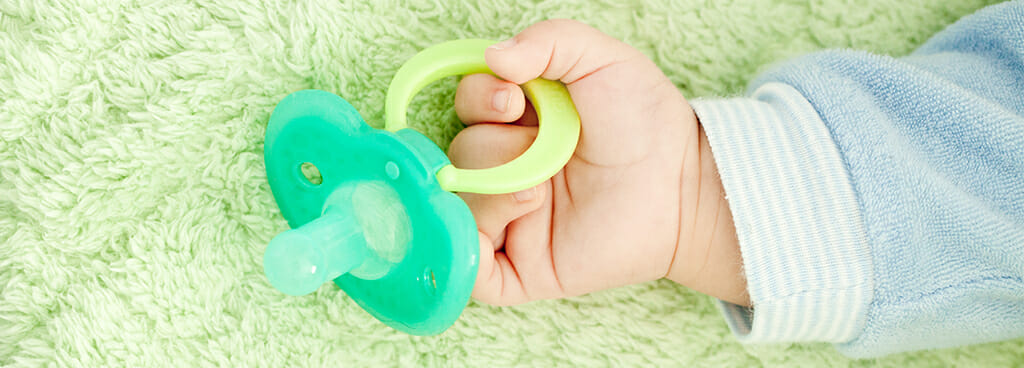- Home
- Services/IndustriesServicesindustries
- About Us
- LocationsStatesAccordion ContentAccordion ContentAccordion ContentAccordion Content
- Job Openings
- Quick Links
- ATS Family

Pacifier Testing
Applied Technical Services offers teether and pacifier testing to detect toxic substances and verify structural integrity in accordance with standards 16 CFR 1511 and 1500.18(a)(8). Testing pacifiers and teethers for chemical and structural safety is especially important due to the increased vulnerability of infants. According to the CPSC, pacifiers and teethers require testing at a CPSC-accepted laboratory such as ATS (using toy safety standard ASTM F963 4.20 & 4.22).
What is BPA?
Including Bisphenol A (BPA) in pacifiers poses a danger to infants and toddlers. BPA is a chemical compound used to manufacture plastics that can be found in all kinds of consumer products that people use every day. Consumer safety agencies like the CPSC heavily regulate the use of this compound in food and drink containers due to health concerns. Even in small amounts, BPA can act as an endocrine disruptor in the human body and potentially cause lifelong adverse health effects.
What are Phthalates?
Phthalates are also closely monitored substances found in everyday products. Manufacturers use these compounds to improve the flexibility and durability of plastic materials. Like BPA, phthalates can be found in pacifiers and pose health risks if they leach into an infant’s body through the mouth. In the US, children’s toys and care articles cannot be manufactured or sold containing more than 0.1 percent of DEHP, DBP, or BBP phthalates.
Structural Integrity Testing
ATS tests pacifiers and teethers to determine if they possess adequate structural integrity in accordance with standards 16 CFR 1511 and 1500.18(a)(8). These standards define performance requirements for each part of a pacifier: the nipple, the mouth shield/guard, and the handle/ring. A pacifier that fails to meet these standards (such as one that does not hold together and breaks into smaller pieces) can present a choking or strangulation hazard to babies and infants. A well-designed pacifier will not break, fit into a child’s mouth in its entirety, or succumb to heat cycle deterioration.
Pacifier and Teether Testing at ATS
ATS tests for both BPA and phthalates to verify that pacifiers and teethers are toxin-free and meet the appropriate safety regulations. Our consumer product testing lab maintains ISO 17025 (A2LA) accreditation to analyze phthalate content using our Gas Chromatograph/Mass Spectrometer (GC/MS). For BPA tests, we use our Triple Quad Liquid Chromatography Mass-Spectrometer (LC/MS/MS). Finally, we conduct all structural integrity testing in strict accordance with 16 CFR § 1511.5 to ensure these products do not become a choking hazard.
If you need third party pacifier and teether compliance testing, our experts can tailor our services to your needs. We offer quick and accurate results, along with detailed reporting. Contact ATS today – We take a closer look!

Request Webform
"*" indicates required fields
